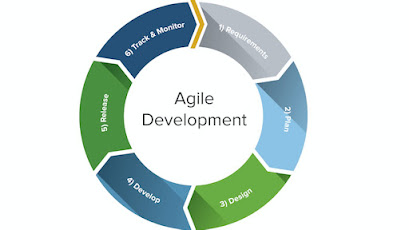How to Use Agile Product Development to Stay Ahead of Competitors
In the fast-paced business
landscape, staying ahead of competitors is a constant challenge. The need to
innovate quickly, adapt to changing customer demands, and bring products to
market faster has never been greater. Agile product development has emerged as
a powerful approach to help businesses achieve these goals, enabling them to
outpace competitors with speed and efficiency. Here’s how you can leverage
Agile product development to gain a competitive edge.
1. Embrace Rapid Iterations
for Faster Product Delivery
One of the key principles of Agile
product development is its focus on rapid iterations, known as sprints.
Instead of waiting months or even years to release a fully developed product,
Agile teams break the development process into shorter cycles, delivering
incremental updates and improvements.
This approach allows businesses
to get products or features to market much faster, reducing the risk of missing
out on opportunities. By releasing products more quickly and regularly, you can
capture market share and customer attention before your competitors have a
chance to react.
2. Prioritize Customer
Feedback to Drive Innovation
Agile product development puts
customers at the center of the process. Regular feedback from users is gathered
at each iteration, allowing businesses to make data-driven decisions that align
with customer needs and preferences.
By prioritizing customer
feedback, you can identify gaps in the market and make adjustments to your
product before competitors even realize the opportunity. This customer-centric
approach not only boosts innovation but also ensures that your offerings are
always relevant and up-to-date, giving you a distinct competitive advantage.
3. Foster a Culture of
Collaboration and Flexibility
Agile methodologies encourage
cross-functional collaboration between development teams, designers, product
managers, and other stakeholders. This collaborative environment fosters open
communication, diverse thinking, and faster problem-solving, all of which are
crucial for staying ahead in a competitive market.
Flexibility is also a core aspect
of Agile. It allows teams to quickly pivot and make changes when market
conditions shift or when new opportunities arise. By building a culture that
embraces collaboration and flexibility, your business can adapt faster than
competitors and respond more effectively to industry trends.
4. Focus on Continuous
Improvement and Innovation
Agile product development
emphasizes continuous improvement through regular retrospectives and
evaluations at the end of each sprint. This process helps teams to identify
what worked well, what didn’t, and what can be improved in future iterations.
Continuous improvement not only
enhances product quality but also drives innovation by encouraging teams to
think creatively and experiment with new ideas. By continuously refining your
processes and exploring innovative solutions, your business can deliver
superior products that stand out from the competition.
5. Reduce Development Risks
and Costs
The Agile approach significantly
reduces the risks associated with product development by catching issues early
in the process. Regular testing and iteration mean that bugs and errors are
identified and resolved before they become major problems.
This early problem detection
helps in managing costs more effectively, as fixing issues during later stages
of product development is often more expensive and time-consuming. By
minimizing risks and controlling costs, you can allocate more resources toward
innovation and strategic growth, outpacing competitors who may struggle with
budget constraints.
6. Leverage Data-Driven
Decision-Making
Agile product development relies
heavily on data to guide decisions at every stage. Teams use metrics and
performance indicators to assess product performance, customer satisfaction,
and market trends.
Using data-driven insights allows
your business to make more informed decisions quickly and accurately. This
proactive approach enables you to anticipate customer needs and market shifts,
ensuring that you stay a step ahead of competitors who may rely on outdated or
less effective strategies.
Conclusion
Agile product development is a
powerful tool that can help your business stay ahead of competitors by
fostering rapid iterations, customer-centric innovation, collaboration, and
data-driven decision-making. By embracing Agile principles, you can bring products
to market faster, adapt to changes with agility, and continuously improve your
offerings to meet evolving customer demands. In today’s competitive landscape,
leveraging Agile product development is not just an advantage—it’s a necessity
for sustained success and growth.



Comments
Post a Comment